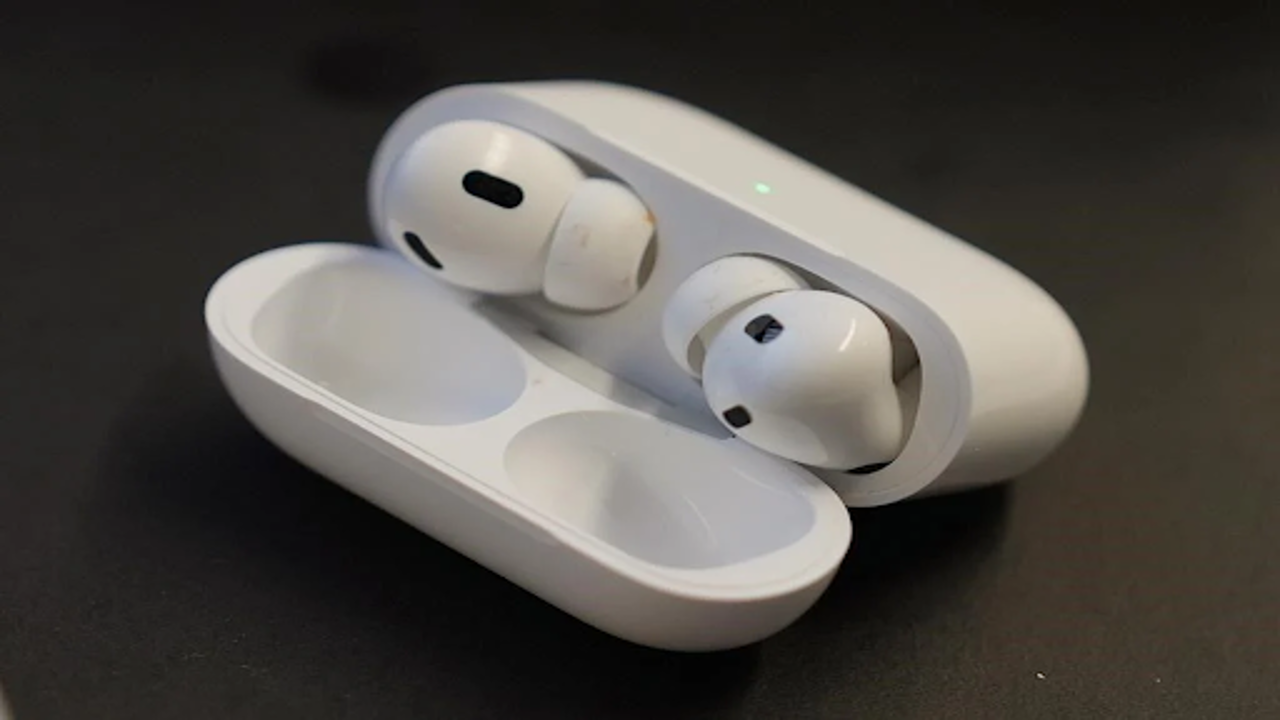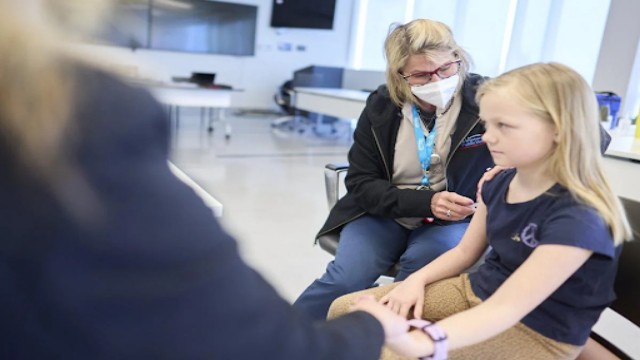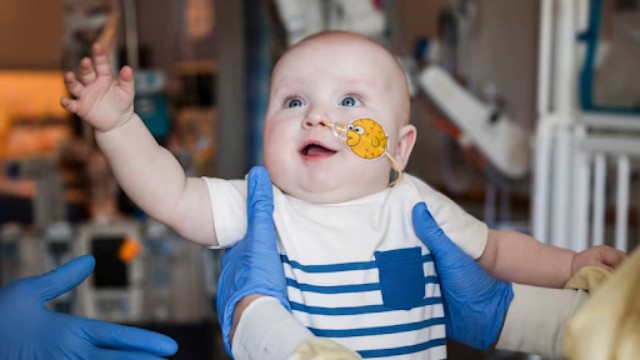
A pair of Apple AirPods Pro 2 are displayed on a table at Brooklyn College's audiology clinic in New York on Oct. 22, 2024. (AP Photo/Mary Conlon)
Some Apple AirPods models can now serve as hearing aids following a recent software update released Monday. Experts say the update, which allows AirPods Pro 2 to function as hearing assistance devices, is a promising development for those with hearing loss, though it may benefit only a fraction of the millions who need hearing aids.
Hearing loss affects approximately 30 million Americans over the age of 12, with many either unaware of their need for hearing aids or reluctant to use them due to cost, discomfort, or appearance. The National Institute on Deafness and Other Communication Disorders notes that while many people could benefit from hearing aids, a significant number have never tried them. In recent years, efforts to make hearing aids more accessible have gained momentum. In 2022, the U.S. Food and Drug Administration (FDA) allowed hearing aids to be sold over-the-counter (OTC) without a prescription, which advocates hoped would bring more affordable options to consumers. Recently, the FDA approved Apple’s software that turns AirPods Pro 2 into functional hearing aids.
Hearing loss doesn’t only impact older people; it affects individuals of all ages and backgrounds. Studies suggest men and rural residents may have higher instances of hearing loss. Experts also point out that untreated hearing loss can lead to feelings of isolation, increased dementia risk, and even balance issues that can result in falls. “Hearing is central to every relationship we have,” says Barbara Kelley, executive director of the Hearing Loss Association of America. “Addressing hearing health early is crucial.”
Before the 2022 rule change, people needed a doctor’s visit and prescription to obtain a hearing aid. Now, OTC hearing aids are accessible to all, potentially lowering prices. But for many, the cost remains a barrier, with decent options starting at around $400 to $500, according to audiologist Elizabeth Stangl. Some cheaper devices only amplify sound without advanced features, reducing their effectiveness.
The new AirPods feature requires an iPhone or iPad for setup and runs users through a hearing test to customize amplification levels. Although they may be slightly more affordable than traditional hearing aids, the AirPods Pro 2 still cost $249 on Apple’s website, and battery life may limit their daily use. Despite these drawbacks, Kelley believes the mainstream appeal of AirPods could reduce the stigma surrounding hearing aids.
Stangl advises potential buyers to research carefully before purchasing OTC hearing aids. Online forums, such as those on Facebook and Reddit, can be helpful resources, and websites like Hearing Tracker offer reliable reviews. Additionally, look for models with customizable pitch settings and feedback management to prevent whistling sounds.
While AirPods Pro 2 may appeal to some with hearing loss, other solutions are available for those on a budget. Smartphone apps and features can assist those with mild to moderate hearing loss. For instance, Apple's "Live Listen" feature turns an iPhone into a microphone, which can make conversations easier to follow in noisy environments.
Catherine Palmer, director of audiology at the University of Pittsburgh Medical Center, notes that smartphones are already powerful hearing tools for many. “Smartphones can function as amplifiers for people with mild to moderate hearing loss, making hearing care accessible,” Palmer says.
As technology like AirPods continues to expand its role in hearing assistance, more people may find solutions that work for their needs.















